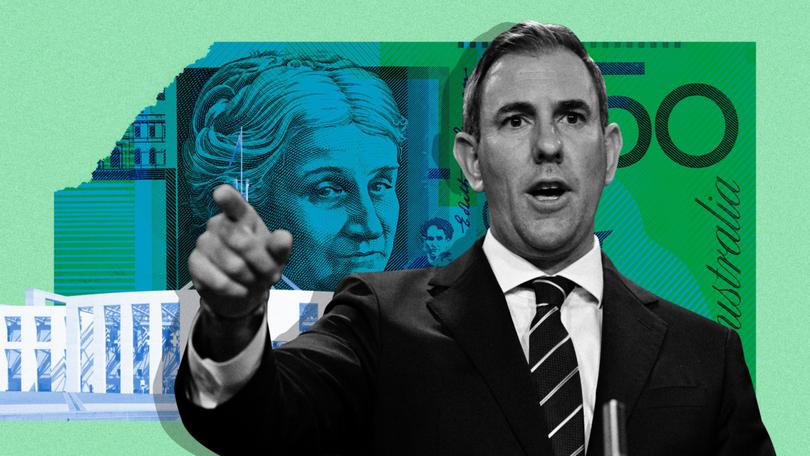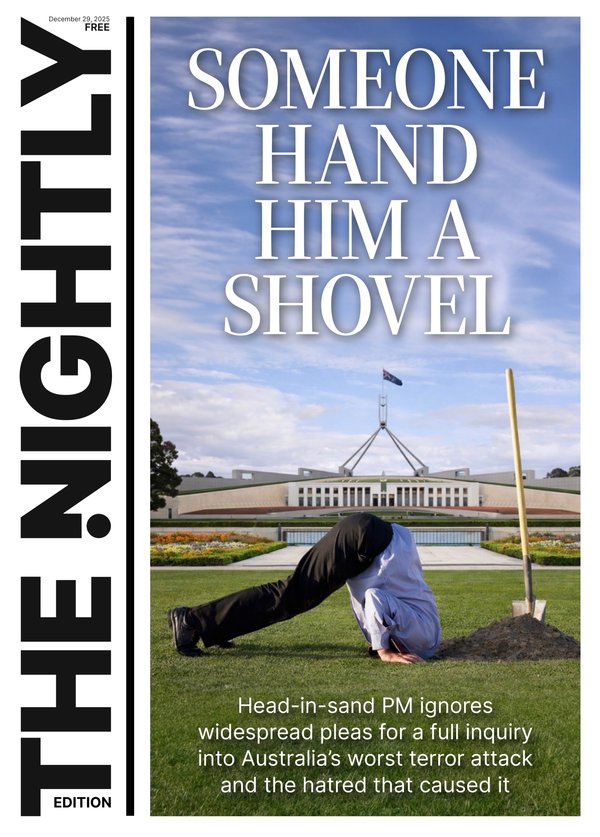Economic growth runs at just 0.2 per cent in June quarter as households cut back

Anaemic economic growth reminiscent of the early 90’s recession reveals households and businesses cutting back amid higher interest rates — and adds to concerns that government spending is prolonging their agony.
Australia’s economy grew just 0.2 per cent in the June quarter, according to the Australian Bureau of Statistics.
“Excluding the COVID-19 pandemic period, annual financial year economic growth was the lowest since 1991-92 — the year that included the gradual recovery from the 1991 recession,” ABS head of national accounts Katherine Keenan said.
Sign up to The Nightly's newsletters.
Get the first look at the digital newspaper, curated daily stories and breaking headlines delivered to your inbox.
By continuing you agree to our Terms and Privacy Policy.The piece of the pie for each Australian — measured by GDP per capita — has shrunk for six quarters in a row.
But it’s not entirely bleak, because the economy has defied warnings the Reserve Bank’s inflation fight would cause a recession.
The numbers show the battle raging between the RBA and Treasurer Jim Chalmers is playing out in wallets across the country.
Consumers are cutting back on discretionary items like takeaway and air travel, with their spending down 0.2 per cent. Purchases of food, cars and clothes all fell.
That comes in an environment of high interest rates intended to tackle persistent price rises.
Businesses were hit, too, with investment into new equipment sinking.
Yet public spending is running at a canter and is up 1.4 per cent. That’s despite economists warning the splurge is making the inflation fight harder. Westpac said government spending was now at a record share of the national pie, higher than 2021.
The numbers set up a clear battle line over the economy — whether government spending is keeping growth afloat or forcing higher interest rates, which slow down the private sector.
“The economy is two-speed. Economic growth in the private sector has been non‑existent over the first half of 2024,” Commonwealth Bank’s Gareth Aird said.
“It is only public spending that has kept GDP growth positive over that period.”
But Betashares chief economist David Bassanese warned strong spending in sectors such as infrastructure would “crowd out” the rest of the economy — which is operating at capacity.
He said the numbers were disappointing but would be what the RBA “feels is required” to get inflation down.
Dr Chalmers talked up the Government’s cost of living relief and played down concerns about spending, adding that public demand was rising at a slower rate than under the previous Morrison government.
“Without government spending growth there would be no growth in the economy at all,” he told a press conference.
Dr Chalmers said the economy was soft as expected but growth was “welcome” when most developed countries had headed backwards at some point in their post-pandemic recovery.
Speaking in Perth today, Prime Minister Anthony Albanese said nearly one million jobs have been created since he came to office, a sign the slowdown wasn’t biting the labour market.
“Keeping people in jobs is absolutely critical,” he said.
Yet shadow treasurer Angus Taylor declared Australia was in an “entrenched household and consumer confidence recession”.
“This government’s economic incompetence has left Australia at the back of the pack,” he said.
“Our core inflation has not moved since January. It is higher than comparable nations.
“And living standards have collapsed the most out of any OECD country under Labor.“
Also unimpressed was EY chief economist Cherelle Murphy, who said the data was “the worst possible combination of statistics”.
“Australian businesses are gaining very little from government spending, which is focused on short-term cost-of-living relief for households and band-aid fixes to neglected problems,” Ms Murphy said.
“For the private sector, there’s a lack of encouragement to invest for our long-term prosperity.”
The figures on the supply side of the economy were no better.
Australian Chamber of Commerce and Industry chief of policy and advocacy David Alexander said productivity — which measures how much output is created from each hour worked — fell again.
“Declining productivity, coupled with rising labour costs and falling profits, show just how tough conditions are for business.” Mr Alexander said.
“The fact the annual growth figure is now at only one per cent should be sounding alarm bells in Canberra.”
The gross domestic product numbers measure the size of the national economy, the value of what Australians produce and the income they earn.
